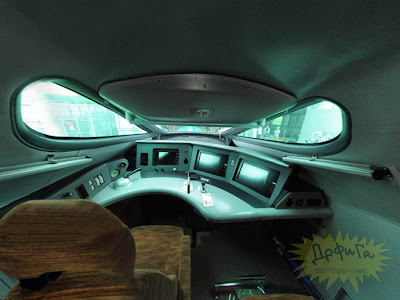Backdropped by a blanket of clouds, the ISS was photographed by a crewmember on board the Space Shuttle Atlantis following the undocking of the two spacecraft. Atlantis pulled away from the complex at 8:13 a.m. (CDT) on October 16, 2002. (NASA)
The Soyuz 14 (TMA-10) spacecraft approaches the International Space Station. With cosmonaut Oleg Kotov at the controls, the Soyuz linked up to the Zarya module nadir port at 2:10 p.m. (CDT) on April 9, 2007. The docking followed Saturday's launch from Baikonur Cosmodrome in Kazakhstan
The ISS, seen following undocking at 1:13 p.m. (CST), December 9, 2000. This is one of the first images of the entire station with its new solar array panels deployed. Before separation, the shuttle and space station had been docked to one another for 7 days. Endeavour moved downward from the space station, then began a tail-first circle at a distance of about 500 feet. The maneuver, with pilot Michael J. Bloomfield at the controls, took about an hour. (NASA)
Astronaut John L. Phillips, Expedition 11 NASA ISS science officer and flight engineer, is photographed among stowage bags in an airlock on the ISS on May 18th, 2005. (NASA)
This medium close-up view in the now densely-equipped Destiny laboratory of the International Space Station shows one floating ball-shaped item which is actually one of the Synchronized Position Hold, Engage, Reorient, Experimental Satellites (SPHERES) on January 27th, 2008. Cosmonaut Yuri I. Malenchenko, Expedition 16 flight engineer representing Russia
The Canadarm2 (center) and solar array panel wings on the International Space Station are featured in this image photographed by a crewmember during the mission's first planned session of extravehicular activity (EVA) while Space Shuttle Endeavour (STS-118) was docked with the station on August 11th, 2007. To see a larger panorama (stitched together with another photo of the Endeavour), click (NASA)
Astronaut C. Michael Foale, Expedition 8 commander and NASA ISS science officer, equipped with a bungee harness, exercises on the Treadmill Vibration Isolation System (TVIS) in the Zvezda Service Module on the ISS on April 12th, 2004. (NASA)






































